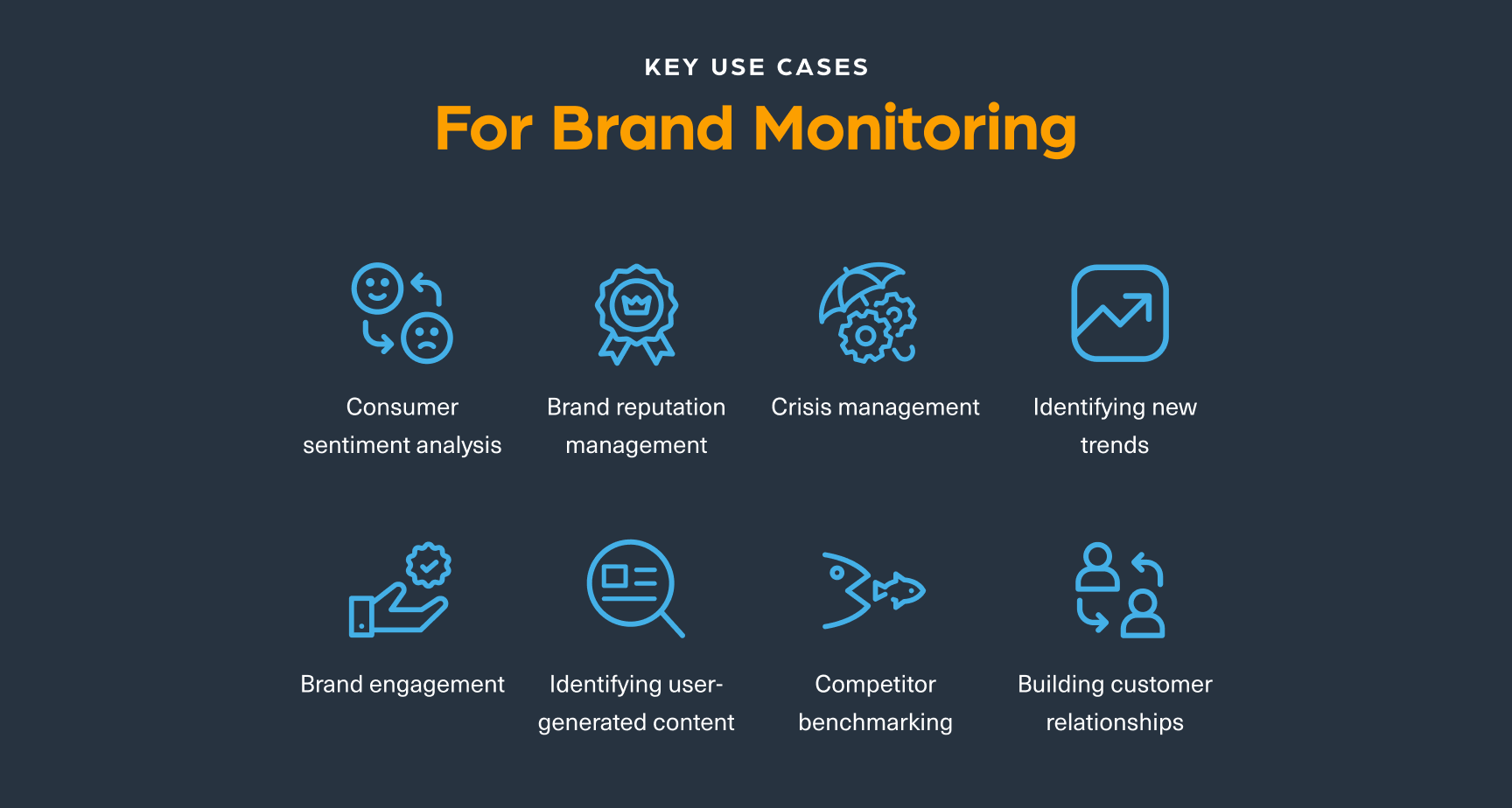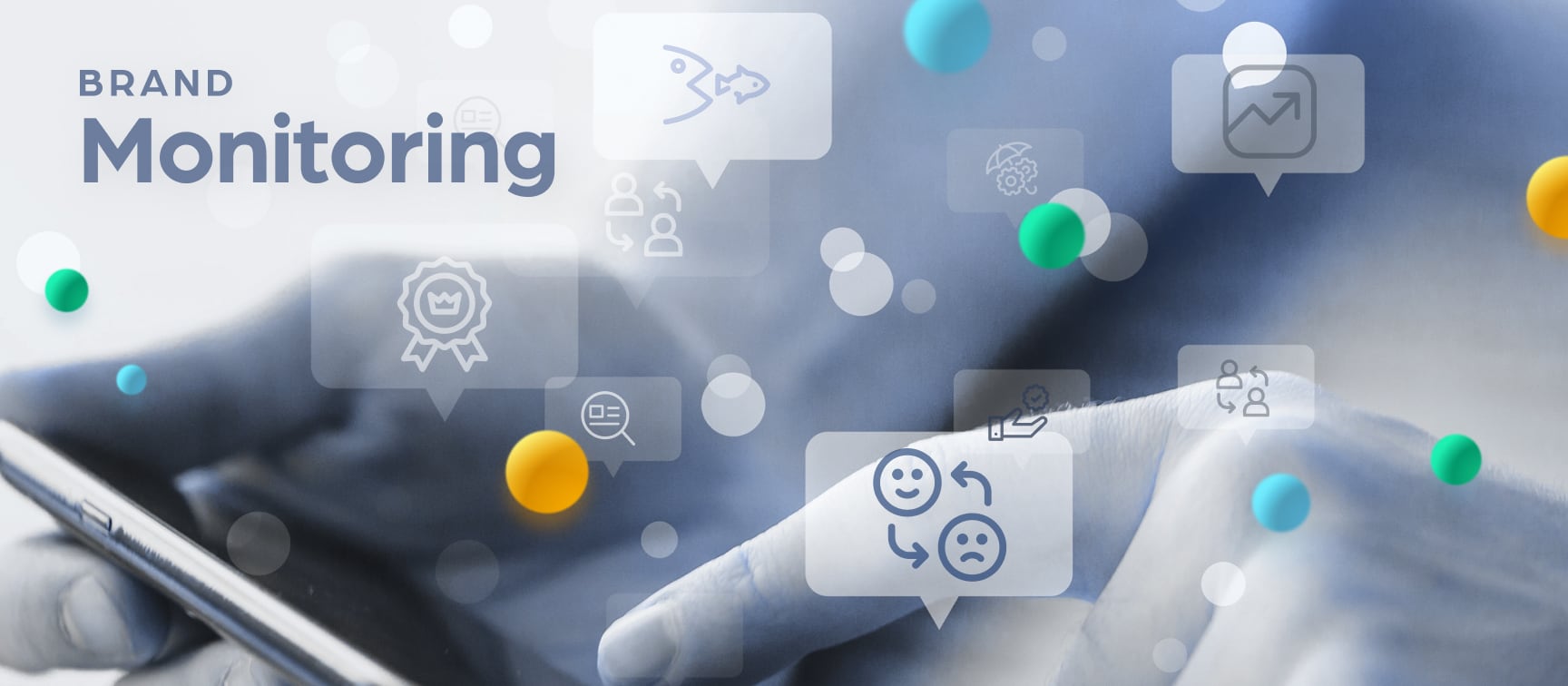Given the increasing reliance on how we create and consume digital media, it’s become easier to voice opinions about brands and businesses online. This makes it essential for companies to keep an eye on what is being said about them online in order to quickly address any negative sentiment before it turns into a brand crisis. Brand monitoring is used by companies to track what customers, employees, shareholders, communities, or other stakeholders are saying about them in order to take necessary action to protect their brand and reputation.
What is brand monitoring?
Brand monitoring is the process of tracking and measuring how a brand is mentioned online. This can be done by using various brand monitoring tools and methods, from automated media monitoring solutions to manually searching for online mentions using tools like Google Alerts. It’s a key part of media intelligence, which is an ever-growing industry that is increasingly becoming reliant on technology for the collection and analysis of relevant data to generate actionable insights based on the media landscape.
While there is some overlap between brand monitoring, social monitoring, and social listening, they are distinct activities that all fall under the umbrella of media intelligence.
Social monitoring is the process of identifying and managing conversations about an organization based on specific topics or keywords. For example, social monitoring might entail responding to a negative review online. On the other hand, social listening involves tracking and managing user conversations online in order to understand clients’ overall sentiments towards a brand. This helps companies understand what is being said about them so that they can make long-term decisions that will affect the brand.
In all cases of gathering media intelligence, whether it’s brand monitoring, social monitoring, or social listening, companies need to monitor several channels such as news, blogs, forums, or social networks for mentions of their brands.
8 key use cases for brand monitoring
There’s more than one way to apply the information gathered from brand monitoring to improve a brand and strengthen its relationship with its clients. Here are some of the most common use cases for brand monitoring.
1. Consumer sentiment analysis – Brand monitoring can be used to track and analyze consumer sentiment around a brand or product.
2. Brand reputation management – Companies can identify potential issues that could damage a brand’s reputation, such as tracking negative sentiment online and taking steps to respond and correct a situation when it arises.
3. Crisis management – In the event of a crisis, brand monitoring can be used to track online activity, identify key reporters and influencers, and analyze sentiment to gauge how the public is reacting and establish steps to mitigate damage.
4. Identifying new trends – By tracking media activity, brand monitoring can help identify emerging trends, which is helpful for understanding what customers are interested in.
5. Brand engagement – Through tracking online mentions, likes, and comments, brands can get a better idea of how customers interact with them online and how engaged they are.
6. Identifying user-generated content – Companies can find positive or negative user-generated content using brand monitoring. This includes flagging negative reviews or forum comments or identifying relevant blogs or influencers who are talking about the brand.
7. Competitor benchmarking – Brand monitoring helps companies benchmark their own performance against their rivals by analyzing competitors’ media mentions, website traffic, and search engine rankings.
8. Building customer relationships – Brands can nurture their relationship with customers by better understanding their needs and wants. By knowing what customers like and dislike about a brand, a company can create better opportunities to connect and provide value.

Brand monitoring challenges
Brand monitoring requires ongoing effort and regular attention to be truly effective. Even with a regular concentrated strategy to track a brand and respond to mentions as they arise, there are still several challenges.
Coverage
There are an infinite number of sources where mentions can come from (news, blogs, forums, etc.), and it can be tough to track them all. It can also be difficult to understand mentions in different languages since it’s tricky to identify and assess sentiment accurately.
Quality
Unstructured data from different sources can be inaccurate or incomplete, making it difficult to get a clear picture of what is being said about a brand. It can also pose a real challenge for automated brand monitoring solutions to quickly parse through unstructured data presented in multiple formats. Additionally, mentions that don’t match the brands you monitor can skew your results and give you a false sense of how a brand is performing.
Real-time data
One of the key challenges of monitoring brand mentions is staying up-to-date with the latest online platforms and technologies. With new media sites, blogs, forums, and networks popping up all the time, it can be difficult to keep track of all brand mentions across different channels and platforms in real-time.
How a News API can optimize brand monitoring
A good News API can help with brand monitoring by tracking and aggregating brand mentions across the web. This provides insights into how the public perceives the brand, what topics are associated with it, and potential issues that may be brewing. Additionally, a News API can be used to track competitor brands and see how they’re faring, which is ideal for benchmarking or keeping an eye on potential threats.
The Webz.io News API can help brand monitoring by providing a way to track and analyze news stories about a particular brand. This can help identify negative or positive sentiments around a brand, as well as track how it’s being talked about over time. Webz.io’s News API has specific advantages over other similar products for three key reasons:
- Coverage – News API provides wide coverage on different types of sources such as news sites, blogs, reviews, and forums. By agglomerating data from millions of sources in more than 170 languages, you’ll get meaningful brand insights and see how it’s trending over time.
- Latency – Webz.io’s News API offers low latency, which is helpful for monitoring coverage on fast-moving channels and news items to ensure you don’t miss anything important and the brand’s coverage remains timely and relevant.
- Quality – With high-quality sources of information, you can rest assured the brand coverage you’re getting is reliable. Webz.io’s NLP technology allows News API to assess the sentiment behind each mention, making it simple to gain a quick overview of different sources.
Aside from these benefits, News API also includes 50TB of historical data dating back to 2008 to rely on in order to create a well-rounded view of trends relating to brand sentiment over time. You can also bolster your brand monitoring strategy with additional APIs for more targeted data, such as Reviews API or Blogs API.
To Wrap Up
For tech-based solutions that offer clients insights into their brand’s public image, it’s essential to be on top of the latest news and information. Webz.io’s News API provides accurate and up-to-date data, making it an essential tool for brand monitoring. The API also offers a wide range of features and customization options, allowing users to tailor their web data feeds to their specific needs. With its comprehensive data and real-time results, Webz.io’s News API is the perfect solution for teams looking to easily and reliably monitor news about a brand.
Speak with our data experts today to learn more about how Webz.io’s News API can help your brand monitoring strategy.




